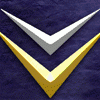Hi,
I am actually in the industry as a 2D and 3D artist.
Drawing is a huge advantage and is considered prerequisite ability by companies for certain positions in some art teams. This may be true for amateur teams, too. In the industry in general, a good drawing ability would serve you well.
However, I have an ironic story. My freehand drawing skills are exceptionally good, though I am admittedly slow and obsessed with quality. Some companies would love that and hire me as a concept artist in a heartbeat. The biggest irony is that I entered the industry through a 3D friend ( a game concept designer, too) who I had known for years. I had only wanted to create 3D models as a hobby and maybe after many years be able to do some pro stuff. After a few weeks of tinkering with Wings3D and having showed him some of my models, my friend said that his jaw literally dropped! He said that the quality of my work was already years advanced and I had only been at it several weeks. "You're a *%##@! prodigy!!" he told me. My friend wanted me to join his art team to make a major game, so here I am! I have been doing this now for over 2 1/2 years and honed other skills such as 2D art and IT consulting in the industry.
If you work hard at the 2 or 3 areas that bring you the most passion and satisfaction, then you too will be on your own personal fast track of advancement in game creation. One secret is to not do too many different things at one time. Get good at one, then move to the next. Another secret is that who you know will have a major effect on the opportunities presented to you, as it did in my case.
Now, there is a strong demand for certain artists and always a demand for very skilled artists in any category, so don't worry if you know you are good.
Character artists with originality and appeal are always sought! Start with paper character concepts for a few months and then get a drawing tablet such as Wacom. GIMP is a good thing in your tool box. Top tool software to consider long term would be to start with Blender. Collada would be a good thing to have in your portfolio, such as making an animated character in Blender and porting by Collada into Torque3D or other engine, animations and all. Maya is great and so is ZBrush, but I highly advise progressing approximately in the order that I listed here, which should typically take a few years - worth the effort! Remember: Many programs are no cost forever or no cost to students in a student version.
Being able to draw your characters first before you touch 3D technology is a powerful way of communicating and promoting your character concepts, and in some companies may be required, reason because it is far faster to draw a character on paper or digital art tablet (Wacom, etc) and show them for approval than to create it in a 3D program. This cost savings (in money and time) has another advantage in allowing changes to be made at the concept phase much quicker, too. If the concept art of the character artist is good enough, it has the added advantage of being shown to potential investors or others concerned or used in advertisements for the game at a later date. All the while, the artist works on approved characters.
Remember: You can climb any mountain in the world if you take it one step at a time. You can do this! 
Clinton







